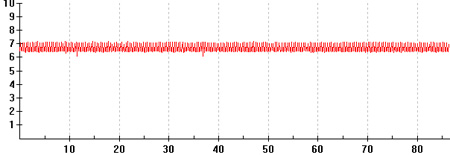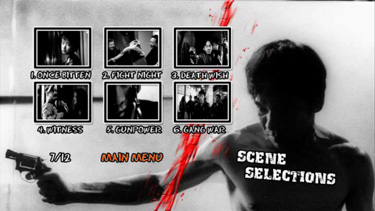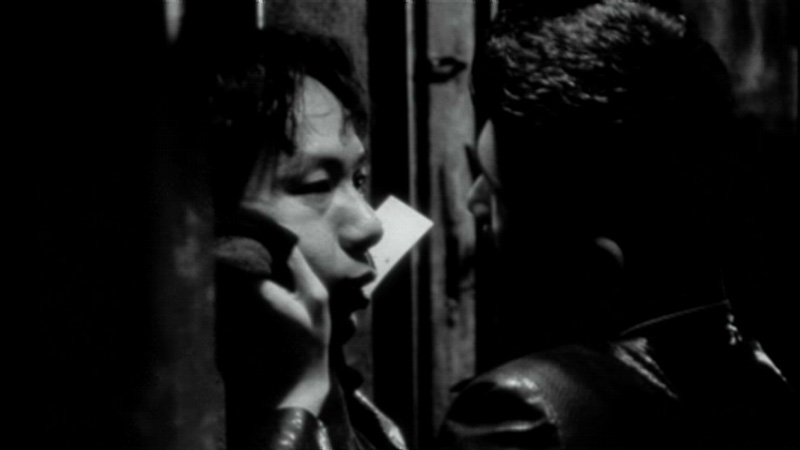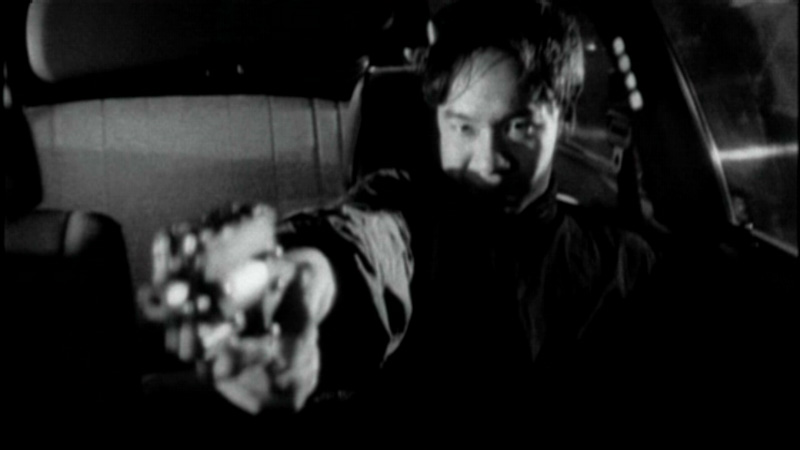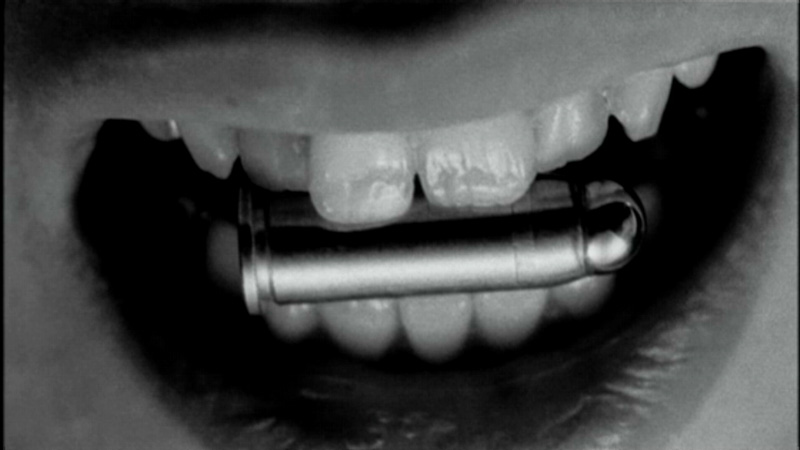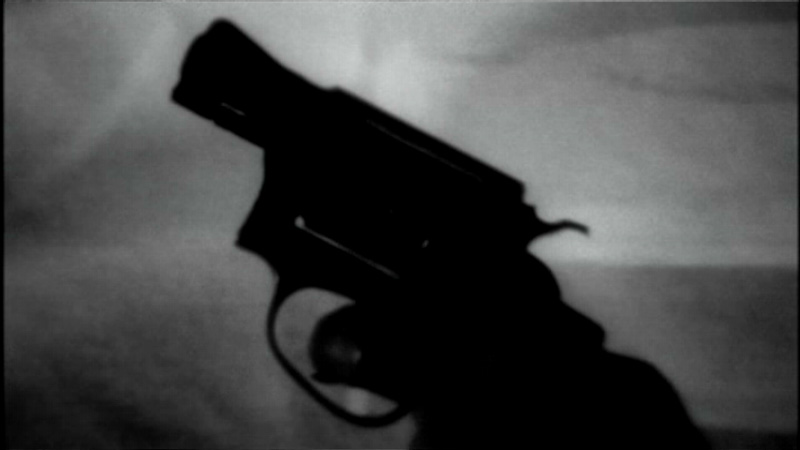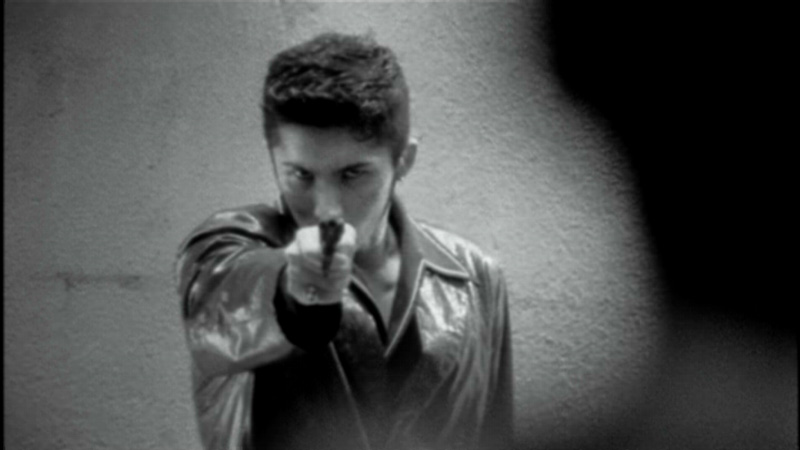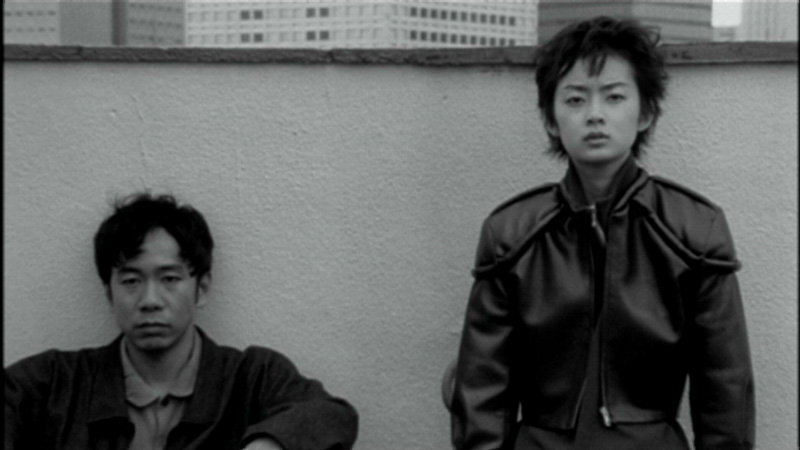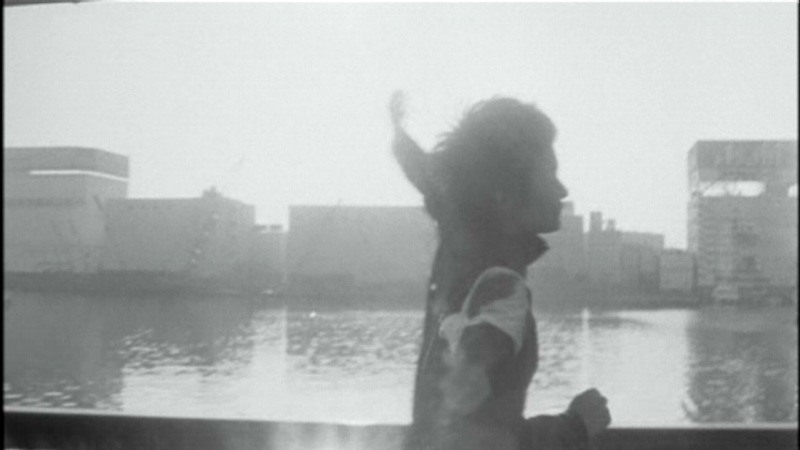![]()
![]()

![]()
![]()
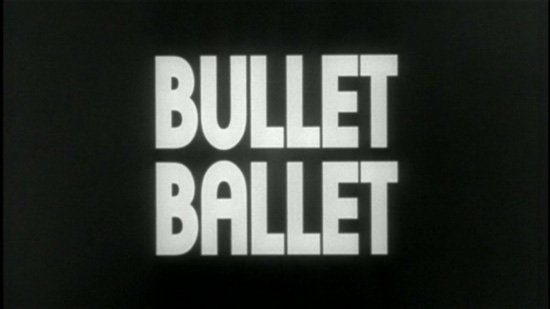
directed by Tsukamoto Shinya
Japan 1998
Tsukamoto Shinya is one of Japan’s most exciting
directors. A true independent director, who not only produces his own
films, but also spends time promoting them by hanging posters up.
Throughout the seventies he made a series of experimental films, then took
a break to graduate from art school and became a director of television
commercials. He returned to film in 1986 and his films from then on were
very influenced by him having been a saleryman, living a life on autopilot
and becoming detached from life. In an interview Tsukamoto said, that our
lives had become sterile and that we no longer had any true sense of
neither our bodies nor our emotions. Thus a main theme in his films deals
with reconnecting with ones body and emotions.
Goda is an executive and makes commercials. One day he comes home to
discover, that his girlfriend has committed suicide, using a Smith and
Wesson Chief’s Special. In order to come to terms with her death, Goda
becomes obsessed with the gun and owning one. In search for one, he comes
across Goto, the leader of a street gang who beats him up and rubs him,
and Chisato, a girl who hangs out with the gang. His obsession with the
gun thus becomes intertwined with Chisato, as she later comes to him and
asks him for protection.
The film is inspired by real events, and one can to some degree approach
is as self-reflectory, as Tsukamoto, as Goda, made commercials and, as
Goda, also was beaten and robbed by a street gang, and finally plays Goda
himself.
It is not without reason that Tsukamoto confronts Goda with Goto. Goda is
a saleryman, belonging to the class of Japanese, who believes in that
their work has value and benefits Japan. Contra to this, Goto is a
chinpira, a street punk, who believes that there is nothing to work for,
as Japan’s economy, despite of the work of the salerymen, collapsed, and
who seeks confirmation thru confrontation. In between them, Chisato
represents the means to salvation.
Another element significant for Tsukamoto is the colour of the film, here
black and white. As in “Tetsuo”, Tsukamoto chose black and white because
it resembled the reflection of metal, here the metal surface of the
handgun. In “Tetsuo 2”, he used a bluish scheme, to reflect the colour of
the office towers, and in “Tokyo Fist”, composed in red and orange, to
reflect the bruises and blood on a boxers face.
Ever since “Tokyo Fist”, Tsukamoto has moved over into a more existential
human drama, and as such, one can view “Bullet Ballet” as the key film of
Tsukamoto, connecting his former cyberpunk themes, as in “Tetsuo”, with
his present human themes. A incredible intense film. A must-see for fans
of Japanese cinema.
Posters
 |
Theatrical Release: September 12, 1998 (Toronto Film Festival)
Reviews More Reviews DVD Reviews
DVD Review: ArtsMagic - Region 1 - NTSC
Big thanks to Henrik Sylow for the Review!
| DVD Box Cover |
|
CLICK to order from: |
| Distribution |
ArtsMagic Region 1 - NTSC |
|
| Runtime | 1:26:37 | |
| Video |
1.78:1 Original Aspect Ratio
16X9 enhanced |
|
|
NOTE: The Vertical axis represents the bits transferred per second. The Horizontal is the time in minutes. |
||
| Bitrate |
|
|
| Audio | 5.1 Dolby Digital Japanese | |
| Subtitles | English (fixed) | |
| Features |
Release Information: Studio: ArtsMagic Aspect Ratio:
Edition Details:
Chapters 13 |
|
| Comments | Shot on
16mm, the image is very dark and grainy. There are minor artefacts in
form of minute halos and mosquito noise, but despite these and the
films appearance, it’s a great transfer. It differs from its OAR of
1.85:1 by being presented in 1.78:1, whether being overscanned or
opened up. The sound is 5.1 Dolby Digital, but sounds to me more like 2.0 Dolby Digital centre based with duplicated surround sound. Despite this, it is a quiet dynamic sound, which really makes the score sound great. Additional material is a, as usual, slow but highly informative audio commentary by Tom Mes, who goes into great detail discussing Tsukamoto, his background, his themes, and just about every aspect of the film. Following this is a 35-minute interview with Tsukamoto, where he talks about his way of making film. |
DVD
Menus
|
|
|
|
|
|
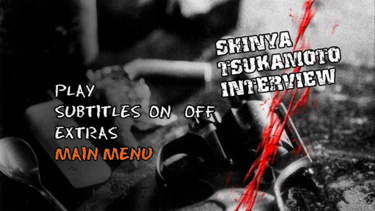 |
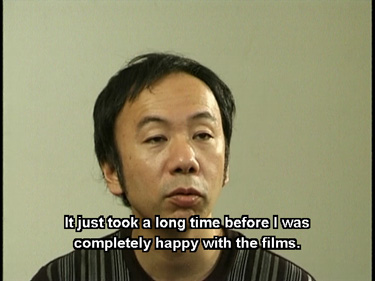 |
Screen Captures
Captures resized to 800px from 960px native resolution
|
|
|
|
|
|
|
|
|
|
|
|
|
|
| DVD Box Cover |
|
CLICK to order from: |
| Distribution |
ArtsMagic Region 1 - NTSC |
|
![]()
![]()
![]()
![]()

